 Brendan Howlin
Brendan Howlin
- Policy
- Posted
From Rio to here

BRENDAN HOWLIN, T.D., Minister for the Environment (1994-1997) reflects on the blueprints, policies, and commitments that emerged from the Rio Earth Summit and looks at how far we have progressed since.
In the early 1980's “sustainability” became part of the environmental and political vocabulary. In 1983 the United Nations General Assembly established the world commission on Environment and Development. The U.N. appointed Gro Harlem Brundtland, a former Minister of Environment of Norway (also it's Prime Minister) as its Chair. The Commission itself soon became known as the Brundtland Commission. After three years work including public hearings in a variety of countries the Brundtland Commission published it's impactive report "Our Common Future". In it, the Commission warned the world of the danger of impending environmental disaster:
Their response to their own analysis was to call for an international conference to be convened to take action. That conference - the United Nations Conference on Environment and Development - was held in Rio de Janeiro in 1992. At Rio's "Earth Summit", more than 170 nations, including Ireland, agreed to work toward the sustainable development of the planet. A global plan of action called Agenda 21 mapped out an action programme to tackle the ongoing human assault on the environment.
Many countries developed their own local Agenda 21 proposals and the new accepted definition of sustainability became a measuring stick by which economic activity was judged, which stated that "sustainable development is development that meets the needs of the present without compromising the ability of future generations to meet their own needs". This definition introduced the idea of social equity between and within generations, and the idea of limitations on the environments ability to meet present and future needs.
Europe's response.
Within Europe's, both the Maastricht Treaty and the Fifth Environment Action Programme "Towards Sustainability" (1992) endorsed the concept of sustainable development. They underlined the assessment that traditional policies must be replaced by an integrated approach to environment and development, if growth is to be achieved with, rather than at the expense of, environmental quality.
A number of key principles were accepted in Europe, stressing that:
- environmental protection constitutes an integral part of the development process.
- developed countries accept responsibility for their disproportionate pressure on the global environment.
- unsustainable patterns of production and consumption should be eliminated.
- effective environmental legislation should be enacted.
- access to environmental information and public awareness and participation in decision making should be facilitated.
- the precautionary approach should be applied; environmental impact assessment should be undertaken for activities likely to have a significant environmental impact, and internalization of environment costs should be promoted.
- the needs of the least developed countries should be given priority.
- within the E.U. the promotion of sustainable growth respecting the environment was included as a principal objective in the Treaty of European Union (1992).
I became Minister for the Environment in 1994 (I attended the Rio conference as an opposition Environment Spokesperson). One of the objectives I set was the development and promotion of a National Sustainable Development Strategy for Ireland.

Policies were taking shape in Europe but not nearly enough to halt the environmental damage being done. In it's report on the state of the environment with the E.U., the European Environment Agency (E.E.A.) in November 1995 concluded that progress in reducing pressures on the environment was not enough to improve general quality and even less to progress towards sustainability. Without accelerated policies, the pressures observed would continue to lead to the accedence of human health standards and environmental carrying capacity. Some successes, including the reduction of ozone depleting substances, emissions of heavy metals and sulphur dioxide were noteworthy, but the E.U. as a whole had not moved sufficiently from concept to realization.
At home, in response to my invitation for submissions from interested bodies, over fifty responses were received and considered in framing Ireland's National strategy. Much interdepartmental debate and hard bargaining was required to bring all Departments and Agencies to the common view that Ireland, long recognised as having a high quality environment with relatively few perceived environmental threats, needed significant change.
In retrospect the parameters set out by us in 1996 underestimated the pressures that Ireland was to face. Our prediction of population increase foresaw an Irish population of 3.62 million by 2006 (ten years hence). The 2002 census shows that the population reached 3.9 million by April 2002. Sustainable Development - A Strategy for Ireland was published in 1997. It was Ireland's first comprehensive environment plan. It provided for Local Authorities to complete their own Agenda 21 plans for their areas. Each County Council and County Borough appointed a local Agenda 21 officer. In 1998 COMHAR - the National Sustainable Development Partnership, was created.
One of my own last actions as Minister for Environment was to attend at the Rio Plus 5 Summit at the U.N. in June 1997. We had just lost the General Election and I was aware that this meeting would be my last input into environmental policy at Ministerial level. Delegates from 165 countries attended, including over 50 Heads of State or Government, and 65 Minister for Environment.
There was agreement on one major matter - five years after Rio's Earth Summit, the planets health was generally worse than ever. Small additional steps were taken on issues like climate change, deforestation and freshwater scarcity. But, as had been clear running up to the conference, North/South differences dominated discussions. The differences centred on how to finance sustainable development globally. Less developed countries felt that commitments made at Rio had not been fulfilled, and with some good reason. The promises of Rio by developed countries to increase official development assistance (ODA) and to make environment friendly technologies available on affordable terms had not been kept. ODA had declined from an average of 0.34% of donor country GNP in 1991 to 0.27% in 1995. Honourably, Ireland was able to report to conference that our ODA had increased threefold since Rio, and we renewed our commitment to achieve the UN target figure of 0.7% of GNP. The then President of the UN General Assembly, Ambassador Razali Ismail of Malaysia called the results of the conference "sobering".
Have things improved since? The answer unfortunately in many areas is not at all. As president of the E.U. Council of Environment Ministers I co-chaired the U.N. Climate Change preparatory conference in Geneva in 1996. There we set targets for reduction of greenhouse gas emissions. In New York in June 1997,preparing the way for the Kyoto conference scheduled for December 1997, Governments agreed to consider "legally binding, meaningful, realistic and equitable targets ".
The Kyoto Protocol to the UN Framework Convention on Climate change was adopted on 11th December 1997. As of last month, April 2003, 84 Parties have signed the protocol. Significantly the Bush Administration has declared that the U.S., with 36.1% of carbon dioxide emissions, will not be a party to the protocol (The total CO2 emissions of those countries who have signed up amounts to 43.9% of total emissions). It's been a long and bumpy road from Rio to here. The concerns that motivated the passionate discussions in 1992 have become ever more acute, and our ability to act in common humanity seems ever more distant
- Brendan Howlin
- Rio Earth Summit
- Climate Change
- deforestation
- freshwater scarcity
- environmental policy
Related items
-
 Property industry faces ‘triple threat’ from climate crisis
Property industry faces ‘triple threat’ from climate crisis -
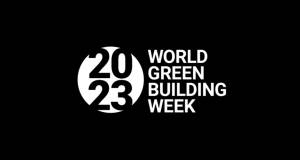 Irish Green Building Council launch event to promote sustainable building practices
Irish Green Building Council launch event to promote sustainable building practices -
 Ashden Awards winners showcase climate solutions
Ashden Awards winners showcase climate solutions -
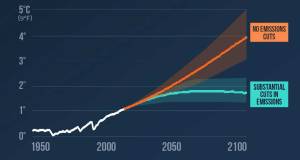 ‘Sufficiency’ key alongside energy efficiency & renewables, says IPCC
‘Sufficiency’ key alongside energy efficiency & renewables, says IPCC -
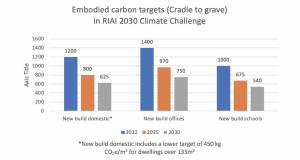 RIAI launches 2030 climate challenge
RIAI launches 2030 climate challenge -
 Climate action plan sets embodied carbon targets for construction
Climate action plan sets embodied carbon targets for construction -
 Grant invests in biofuel tech for oil boilers
Grant invests in biofuel tech for oil boilers -
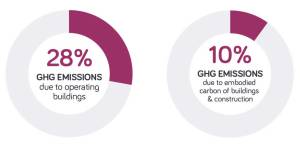 Architects call for urgent climate action ahead of COP 26
Architects call for urgent climate action ahead of COP 26 -
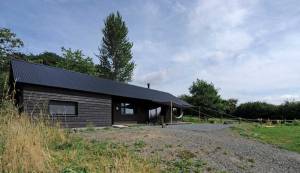 The PH+ guide to overheating
The PH+ guide to overheating -
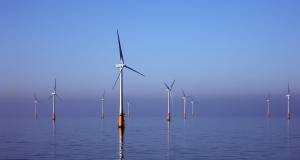 Net zero carbon plans back renewables over fabric
Net zero carbon plans back renewables over fabric -
 Building sector must show bold climate leadership
Building sector must show bold climate leadership -
 Deep retrofit crucial to green recovery, climate committee says
Deep retrofit crucial to green recovery, climate committee says
